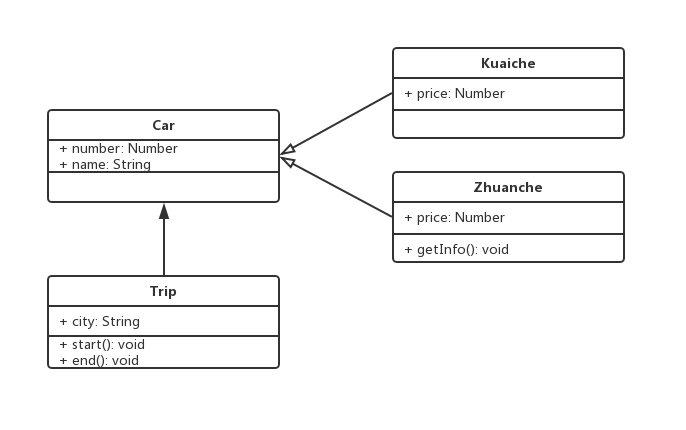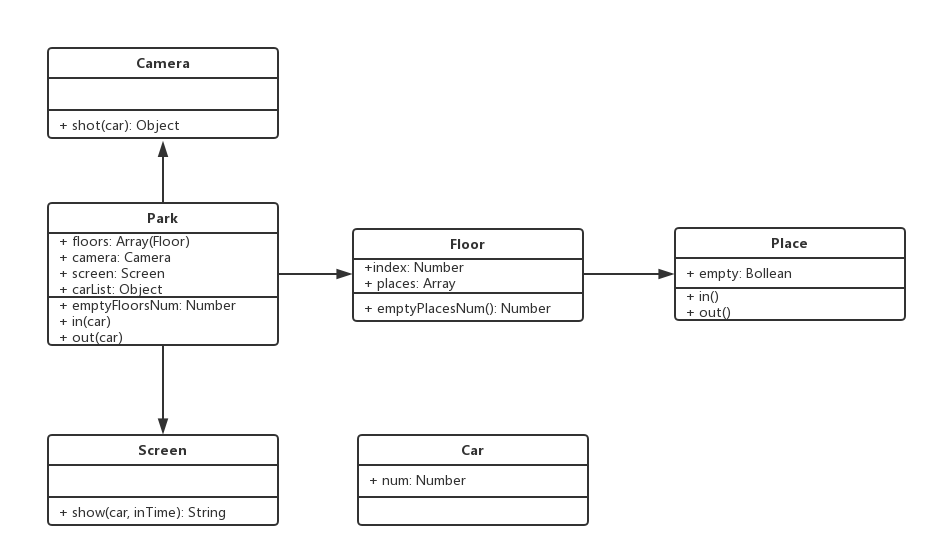关于设计
- 按照哪一种思路或标准来实现功能;
- 功能相同,可以有不同的设计方案来实现;
- 伴随需求增加,设计作用才体现出来(版本迭代,需求变化);
设计哲学(Unix/Linux)
- 小即是美;
- 让每个程序做好一件事;
- 让每个程序都称为过滤器(
gulp的pipe、webpack的loader); - 快速建立原型(快速发布,获取用户需求,再迭代);
- 舍弃高效率而取可移值性(取舍,宁可放弃效率高的也要选择可复用的);
- 采用纯文本来存储数据(取舍,宁可放弃便于计算机阅读的方式也要选择方便人读的格式);
- 充分利用软件的杠杆效应(软件复用);
- 使用shell脚本来提高杠杆效应和移值性;
- 避免强制性的用户界面(使用命令行,高效)(用户界面占用内存,也会存在安全问题);
小准则
- 允许用户定制环境;
- 尽量使操作系统内核小而轻量化(包含最核心的API,内核是内核,工具是工具,插件是插件);
- 使用小写字母并尽量简单(list - ls);
- 沉默是金(没有就不输出);
- 各部分之和大于整体(部分之间不影响);
- 寻求90%的解决方案(28 定律:20% 成本解决 80% 的需求,剩下 20% 的需求想要解决需要花更多时间不值得去做);
1.演示:沉默是金 + 让每个程序都称为过滤器
ls
ls | grep .json
ls | grep .json | grep 'package' // package.json
ls | grep .json | grep 'package1' // 什么都不显示(沉默是金)
五大设计原则-SOLID
- S(single)-单一职责原则- 一个程序只做好一件事;如果功能过于复杂就拆分开,每个部分保持独立;
- O(open-close)-开放封闭原则- 对扩展开放,对修改封闭;增加需求时,扩展新代码,而非修改已有代码;
- L(Liskov)-里氏置换原则-子类能覆盖父类;父类能出现的地方子类就能出现;
- I(Interface)-接口独立原则-保持接口的单一独立,避免出现”胖接口“;js中没有接口(typescript除外),使用少;
- D(Dependence)-依赖倒置原则-编程依赖抽象接口,不要依赖具体实现;使用方只关注接口而不关注具体类的实现;
示例 promise
- 单一职责原则:每个 then 中的逻辑制作好一件事
- 开放封闭原则:如果新增需求,扩展
then
// 0.0.1/loadImg.js
function loadImg(src) {
let promise = new Promise(function (resolve, reject) {
let img = document.createElement('img');
img.onload = function () {
resolve(img);
}
img.onerror = function () {
reject('图片加载失败');
}
img.src = src;
});
return promise;
}
let imgUrl = 'https://raw.githubusercontent.com/ruizhengyun/images/master/cover/ruizhengyun.cn_.png';
loadImg(imgUrl).then(function (img) {
console.log(`width: ${img.width}`);
return img;
}).then(function (img) {
console.log(`height: ${img.height}`);
}).catch(function (ex) {
console.log(ex);
});
设计到模式(设计是设计,模式是模式)
- 设计-原则-思路-心法;
- 模式-模板-做事-招式;
如何学设计模式
- 明白设计的用意;
- 通过经典应用体会它的整正使用场景;
- 自己编码时多思考,多模仿(刻意训练);
面试题
示例1:打车
1.需求
- 打车时,可以打专车或快车。任何车都有车牌号和名称
- 不同车价格不同,快车每公里1元,专车每公里2元
- 行程开始时,显示车辆信息
- 行程结束时,显示打车余额(假定行程为5公里)
2.UML类图

3.编码
// 0.0.1/car.js
class Car {
constructor(num, name) {
this.num = num
this.name = name
}
}
class Kuaiche extends Car {
constructor(num, name, price) {
super(num, name)
this.price = price
}
}
class Zhuanche extends Car {
constructor(num, name, price) {
super(num, name)
this.price = price
}
}
class Trip {
constructor(car){
this.car = car
}
start() {
console.log(`行程开始,名称${this.car.name},车牌号:${this.car.num}`)
}
end() {
console.log(`行程结束,价格:${this.car.price * 5}`)
}
}
// 实例
let k1 = new Kuaiche('浙A Z1001', '大众', 1);
let t1 = new Trip(k1);
t1.start();
t1.end();
console.log('---------')
let z1 = new Zhuanche('浙A Z0001', '奔驰', 3);
let t2 = new Trip(z1);
t2.start();
t2.end();
示例2:停车
1.需求
- 某停车场,分3层,每层100车位
- 每个车位都能监控到车辆的驶入与离开
- 车辆驶入前,显示每层的空余车位数量
- 车辆驶入时,摄像头可识别车牌号和时间
- 车辆离开时,出口显示器显示车牌号和停车时长
2.UML类图

3.编码
// 0.0.1/park-car.js
const random = (start, end) => {
return Math.floor(Math.random() * (end - start + 1)) + start;
}
const timestampToTime = timestamp => {
const date = new Date(timestamp);
const Y = date.getFullYear() + '-';
const month = date.getMonth() + 1;
const M = (month < 10 ? ('0' + month) : month) + '-';
const D = date.getDate() + ' ';
const h = date.getHours() + ':';
const m = date.getMinutes() + ':';
const s = date.getSeconds();
return Y + M + D + h + m + s;
}
// 车
class Car {
constructor(num) {
this.num = num
}
}
// 摄像头
class Camera {
shot(car) {
return {
num: car.num,
inTime: Date.now()
}
}
}
// 出口显示屏
class Screen {
show(car, inTime) {
console.log(`车牌号 ${car.num},停车时间 ${Date.now() - inTime} 毫秒`);
}
}
// 停车场
class Park {
constructor(floors) {
this.floors = floors || []
this.camera = new Camera()
this.screen = new Screen()
this.carList = {} // 存储摄像头拍摄返回的车辆信息
}
in(car) {
// 通过摄像头获取信息
const info = this.camera.shot(car);
const i = random(1, 100);
const j = random(1, 3);
const place = this.floors[j].places[i]; // 第0层某个随机车位
place.in()
info.place = place
// 记录某车牌的信息
this.carList[car.num] = info; // { num, inTime, place }
// console.log(`车牌号${info.num} 在 ${timestampToTime(info.inTime)} 驶入`);
}
out(car) {
// 获取信息
const { place, inTime } = this.carList[car.num];
place.out()
// 显示时间
this.screen.show(car, inTime);
// console.log(`车牌号${car.num} 在 ${timestampToTime(Date.now())} 驶出`);
// 清空记录
delete this.carList[car.num];
}
emptyFloorsNum() { // 计算每层车位剩余多少
return this.floors
.map(floor => `${floor.index} 层还有 ${floor.emptyPlacesNum()} 个空车位`)
.join('\n')
}
}
// 层
class Floor {
constructor(index, places) {
this.index = index
this.places = places || []
}
emptyPlacesNum() { // 计算每层车位剩余多少
let num = 0
this.places.forEach(place => {
if (place.empty) {
num += 1
}
});
return num
}
}
// 车位
class Place {
constructor() {
this.empty = true
}
in() {
this.empty = false
}
out() {
this.empty = true
}
}
// 测试-----------
// 初始化停车场
const floors = [];
for (let i = 1; i < 4; i++) {
const places = []
for (let j = 1; j < 101; j++) {
places[j] = new Place()
}
floors[i] = new Floor(i, places)
}
const park = new Park(floors);
// 初始化车辆
const car1 = new Car(1001);
const car2 = new Car(1002);
const car3 = new Car(1003);
console.log('第1辆车进入,当前停车库停车情况');
console.log(park.emptyFloorsNum());
park.in(car1);
console.log('第2辆车进入,当前停车库停车情况');
console.log(park.emptyFloorsNum());
park.in(car2);
console.log('第1辆车离开');
park.out(car1);
console.log('第2辆车离开');
park.out(car2);
console.log('第3辆车进入,当前停车库停车情况')
console.log(park.emptyFloorsNum());
park.in(car3);
console.log('第3辆车离开');
park.out(car3);